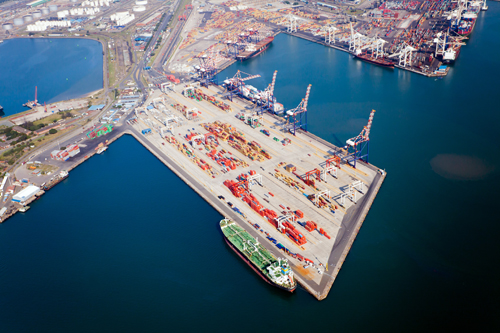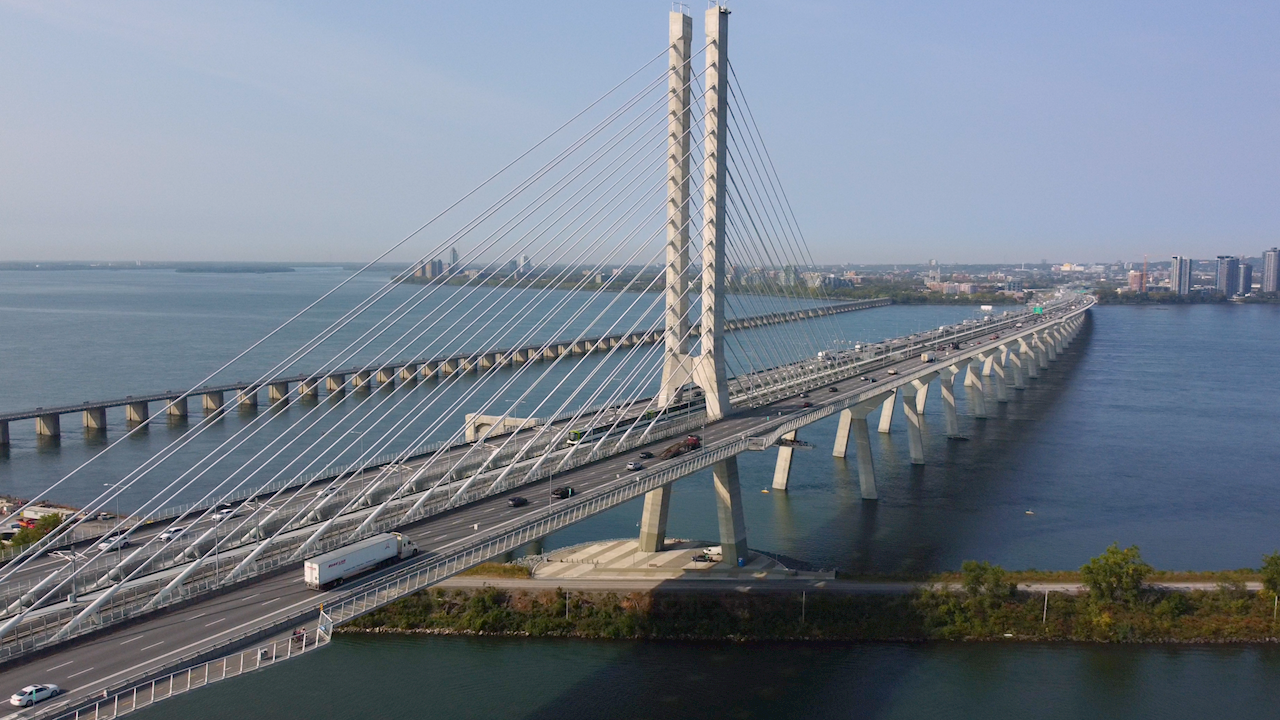
It was in 2000 that Transnet’s then single port division, Portnet, was divided into separate operations and landlord businesses. It was this decision that led to the creation of Transnet Port Terminals (TPT). Since its formation the business has played a fundamental role in supporting the export-led strategy of the South African government.
Most Southern African import and export commodities are handled through South Africa’s seven logistics ports, Richards Bay, Durban, Saldanha, Cape Town, Port Elizabeth, East London and Port of Ngqura. The Port of Ngqura is the newest of the above ports. It is here, seven kilometres outside of Port Elizabeth, where a great degree of investment has been made in order to purchase a total of six new cranes and accumulate a large amount of borrowed equipment with the objective of getting the facility up and running quickly so as to meet the expanding demand for imports and exports in the region.
It is at these locations that TPT handles container, mineral bulk, agricultural bulk and RoRo operations. In addition the business also implements logistics management solutions for its container, bulk, break-bulk and car terminal operations. Its major customers meanwhile represent a broad spectrum of the economy and include the shipping industry, vehicle manufacturers, agriculture, timber and forest products, the mining industry and exporters of minerals, metals and granite.
TPT operates container terminals at Ngqura, Port Elizabeth, Cape Town and Africa’s busiest port, Durban, which possesses the southern hemisphere’s largest and best-equipped container terminal. Over the course of the last decade TPT has invested large sums of capital in upgrading this specific sector. In 2007 the redeveloped Durban Container Terminal Pier 1 facility, South Africa’s first rubber tyred gantry operation, was launched. Following this was the launch of Ngqura Container Terminal, the state of the art transhipment hub, servicing traffic from the East, South America and West African markets.
Each of TPT’s container terminals utilises the NAVIS system which provides integrated real time shipping information. These terminals are also supported by a call centre which provides a single point of contact and consolidated information to facilitate communication and customer service.
TPT’s mineral bulk operations at Richards Bay, Port Elizabeth and Saldanha are integral parts of logistics corridors for key cargo. Richards Bay is something of a hub for as many as 13 core commodities, including coal and woodchips, while Port Elizabeth handles the region’s manganese products, and Saldanha its iron ore and steel products. The work that takes place as part of these operations is characterised by long runs on a network of conveyor belts, large dry bulk parcels and neo-bulk parcels using skip loading solutions.
Agricultural exports however are just as vital to the South African economy. This makes it all the more important that TPT is able to provide state-of-the-art agricultural bulk operations that offer customers storage and other facilities that cater to international market requirements. Commodities handled across ports such as Cape Town and East London include wheat, maize, soya bean meal, animal feed and various fresh produce.
Different break-bulk commodities meanwhile are handled at various different ports. At its port in Durban TPT handles steel commodities, project cargo and abnormal cargo, as well as carrying out niche container business, while in Cape Town the predominant products include timber, steel and cement. Meanwhile at its East London facility TPT handles containerised cargo that includes motor vehicle components, chemicals, textiles, fruits, sugar and scrap items.
Vital as all of these areas of TPT’s business may be, and believe me they are absolutely fundamental to South Africa’s economic prosperity, arguably the most exciting aspect of its operations is its car terminal operations. Over the course of the last decade South Africa has experienced exponential growth in its automotive industry and today the Durban car terminal is responsible for handling approximately two-thirds of all vehicles either entering or leaving the country.
The growth of this sector played a strong role in ushering in a new era for the Durban car terminal in early 2003. It was then that work commenced on Durban’s much-needed port expansion project. One element of this project involved the construction of a three-storey structure that boasts 3,800 additional parking bays and an over-pass linking the car terminal with the quayside. Today the terminal is in the process of increasing its parking capacity up 10,000 parking bays to 14,000, resulting in an increased throughput from 400,000 units to 570,000 units per annum.
The South African government today finds itself embarking upon a huge infrastructure drive with the core aims being to boost the economy and alleviate poverty. The country’s ports are seen as key engines for the economic growth that the government hopes to achieve and it is for that reason that, under the Transnet Market Demand Strategy, TPT will receive R33 billion aimed at creating new capacity for terminals to meet projected future demand.
With this in mind plans are already afoot to expand various aspects of the business including increasing bulk handling capabilities at Saldanha and expanding the business’s coal skip container capacity by purchasing 1,500 new units. These are without doubt promising times for South Africa’s commercial ports, the regions they are located, TPF as an organisation and most importantly its customers.
Written by Will Daynes, research by Paul Bradley
DOWNLOAD
 Transnet-Africa-T&L-Aug13-Bro-s.pdf
Transnet-Africa-T&L-Aug13-Bro-s.pdf













